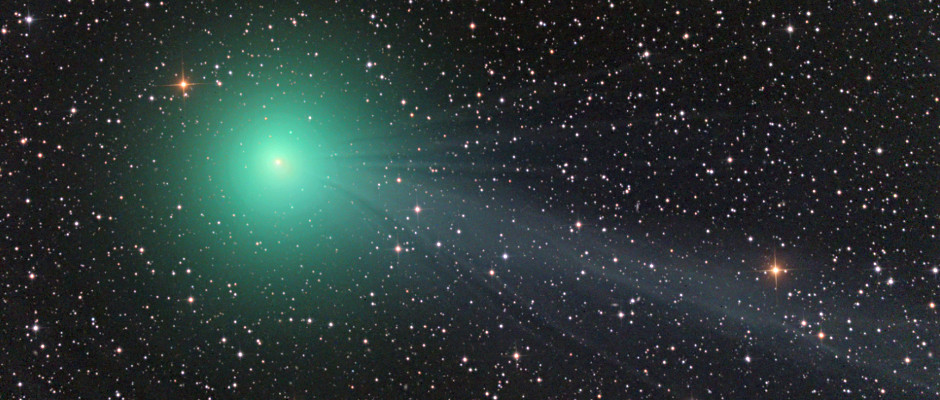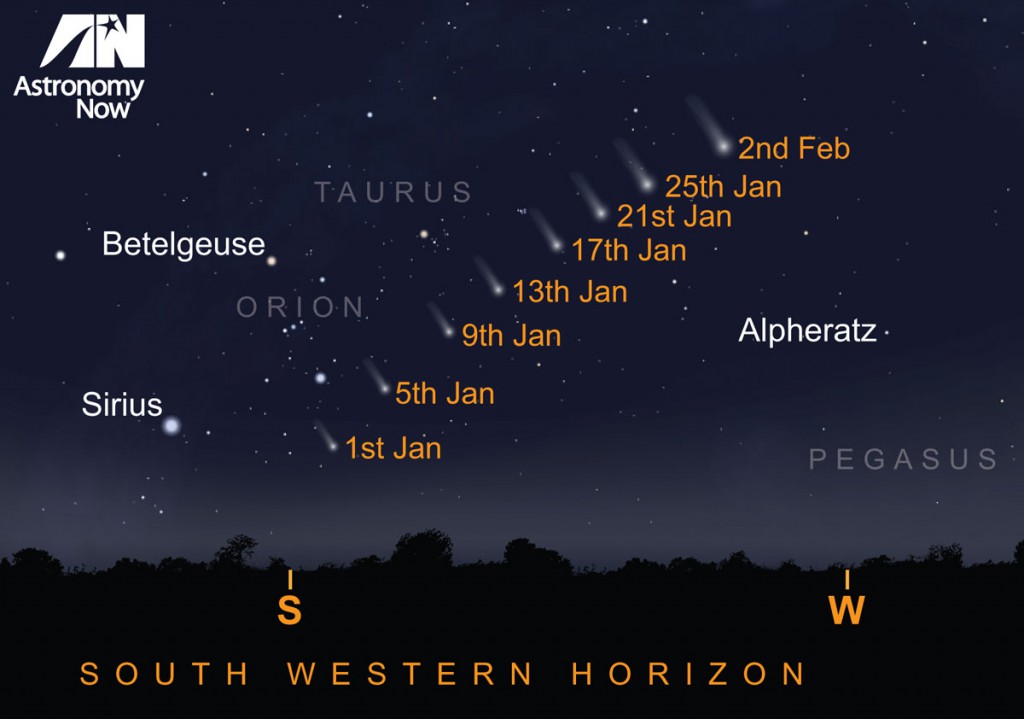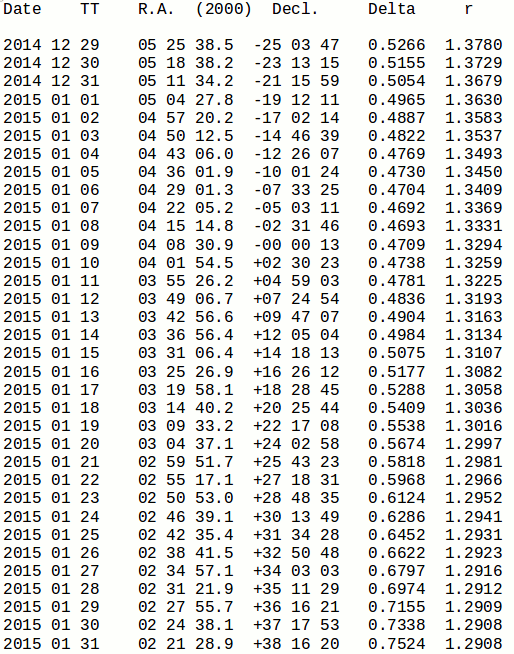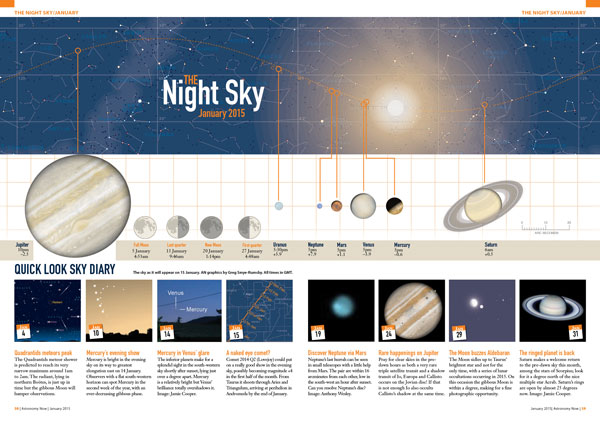This post is now outdated. Please click here for current viewing information.
Those of you who received a pair of binoculars or a telescope for Christmas hoping that something interesting and unusual to view might come along have just had your prayers answered, for it’s now open season for C/2014 Q2 — better known as simply Comet Lovejoy — set to become the first bright and hopefully naked-eye comet of 2015.
The fifth comet discovery of Australian amateur astronomer Terry Lovejoy using an 8-inch wide-field telescope on 17th August 2014, it quickly became apparent that this was a long-period comet, but not its first visit to the Sun.
With a high orbital inclination of 80°, Comet Lovejoy is approaching the ecliptic from below which favoured Southern Hemisphere observers until the end of 2014, but that’s all changing as the comet rapidly heads north.
The waxing gibbous Moon is currently interfering with observation of the comet, but binocular observers with an unobstructed view of a southern horizon that’s also free of light pollution should scan eastern Eridanus about 9° to the lower right of Rigel in Orion around 10 pm to stand a good chance of viewing the diffuse puffball glow of C/2014 Q2.
Currently at magnitude +5 (or brighter) it should still be obvious in moonlight, particularly in a telescope. While numerous astroimages show Comet Lovejoy sporting a thin ion tail about 5° long, the visual impression is that of a slightly asymmetric greenish ball concentrated towards the centre.
By the night of Full Moon on January 5th, the comet will be 11° directly west (right) of Rigel, much higher in the sky and easily identifiable despite the Moon’s glow in Gemini.

Comet Lovejoy at its best
With the waning gibbous Moon (you can check moonrise/set times with our Almanac) comes the best part of this cometary apparition. C/2014 Q2 makes its closest approach to the Earth on 7th January 2015 at 0.469 Astronomical Units (43.6 million miles; 70.2 million kilometres).
Comet Lovejoy crosses the celestial equator on 9th January 2015 and moves into Taurus — hopefully a comfortable naked-eye object by now — before passing into Aries on the 16th. A nice wide-angle astrophoto opportunity occurs on January 18th when C/2014 Q2 passes about 9° from the Pleiades.
With New Moon occurring on 20th January we have to be mindful of the returning lunar glow and Comet Lovejoy moves into the constellation of Triangulum on the 25th. The comet reaches perihelion on 30th January 2015 at a distance of 1.29 AU (120 million miles; 193 million kilometres) from the Sun, by which time we will see C/2014 Q2 heading for a close conjunction with beautiful double star Almach (gamma Andromedae) on 4th February.
For observers with equatorially-mounted telescopes or GoTo instruments, the table below lists the daily J2000 Epoch coordinates of right ascension (R.A.) and declination (Decl.) for Comet Lovejoy at Oh UT throughout the brightest part of the comet’s visibility. The column labelled Delta is the comet’s distance from the Earth in Astronomical Units (1 AU = 92.9 million miles or 149.6 million kilometres), while r is the comet’s distance from the Sun, also in AU.

Inside the magazine
Find out more about what’s up in the night sky in the January edition of Astronomy Now. Never miss an issue by subscribing to the UK’s biggest astronomy magazine. Also available for iPad/iPhone and Android devices.




